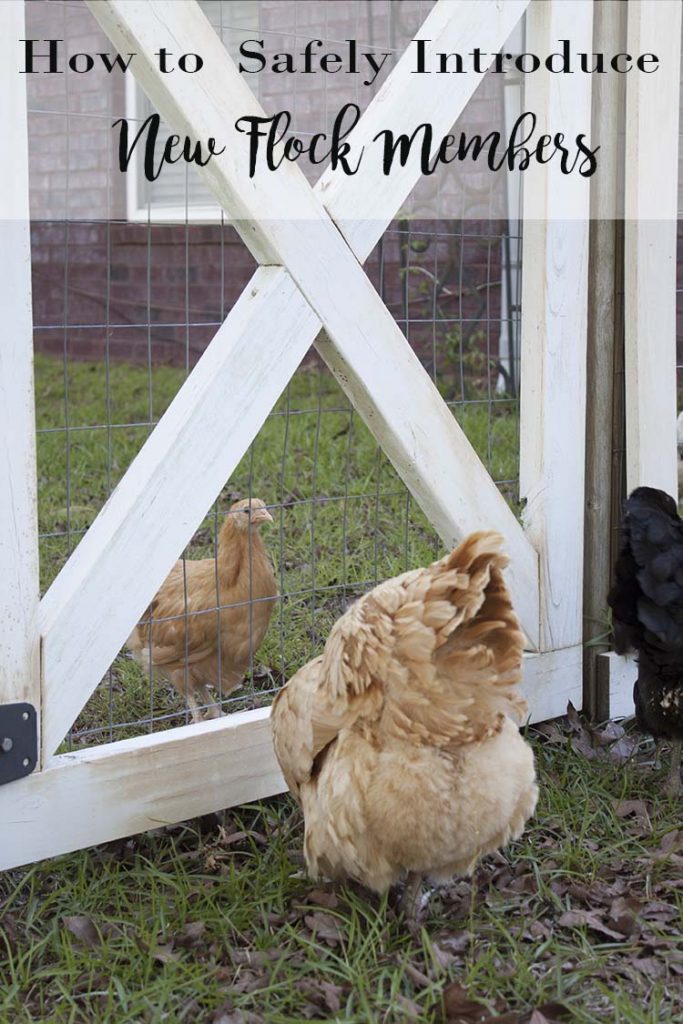
The fancy farmhouse chicken coop is three weekends underway! Here’s weekend #2 update in case you missed it: framing out the coop. But since we’re nearing the end, it’s time to start thinking about introducing all those new flock members-and that can look like a scene straight out of Mean Girls. The phrase pecking order is a cliche for a reason. Chickens really do establish a pecking order, or a hierarchy, to see who’s boss. Basically, who gets to be Regina George and who has to be Gretchen instead. But pecking order is just one element to safely introducing new flock members. Preventing disease is another.
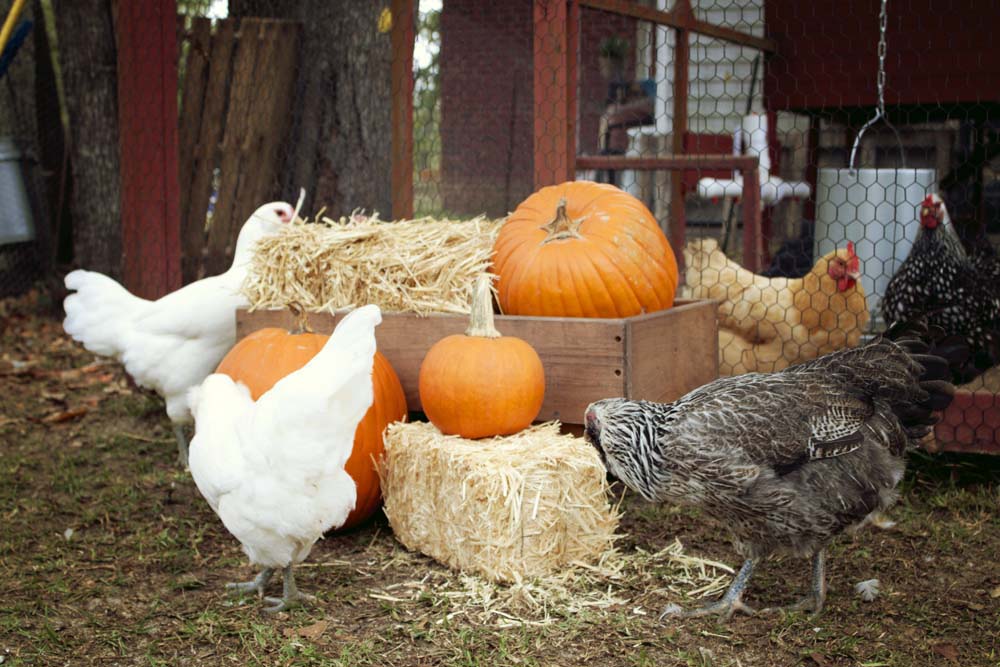
How to Safely Introduce New Flock Members
My first set of chickens, bought on a whim, came home to no coop and zero preparation. I had already read all the books, so I was able to quickly get up to speed on backyard chicken keeping just in time. I do not recommend this method! Those three baby chicks (pullets – a.k.a. teenagers to be exact) grew much faster than I could have imagined, and it wasn’t long before I needed a coop. A friend of mine tracked down one for sale on Facebook. Unfortunately, it also came with fifteen of its own chickens. (It was either that or leave them to die with their current owner. You’ll find that this kind of thing happens to me a lot and it’s pretty surprising to me, at this point, that I don’t have a rescued deer, cow, or ostrich – or all three! – because that is literally my luck. Or theirs. Hard to tell.) So obviously I took the forsaken chickens and their coop, but I knew enough to know that I could not immediately mix these two flocks together. That’s when we built the Barbie Dreamhouse Chicken Coop.
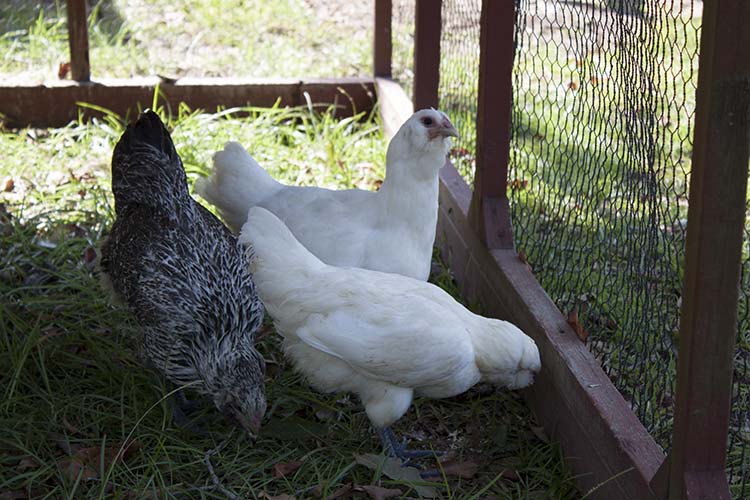
Quarantine
I alluded to this in my post about how to brood baby chicks, but I used an innocuous word, cull, to describe the situation because I didn’t want to thoroughly depress you in a post about cute baby chicks. But it was a word that really gave her too much credit. What my rescued flock’s previous owner was actually doing was allowing these birds to starve to death because she “didn’t want to keep chickens anymore”. She called it, letting them die off. That’s the day I went home with not only a new/used coop but with 15 unexpected chickens as well.
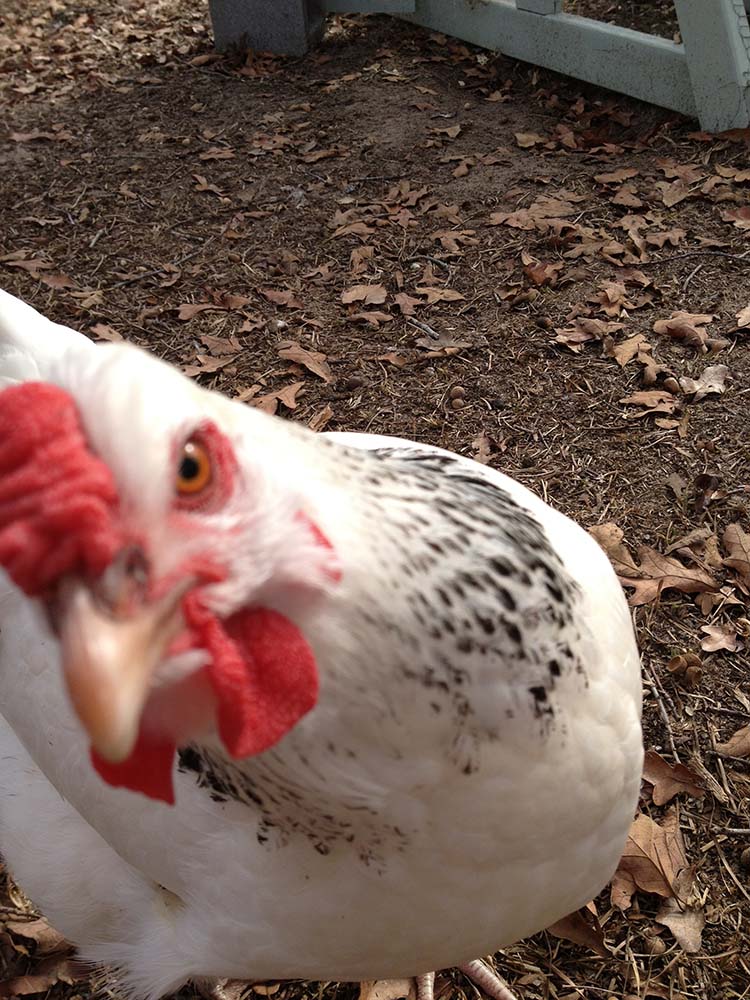
I’m happy in a way because knowing how they’d been treated made me more wary of exposing the three pullets I already had at home to their newly rescued family. But the truth is, you should always watch for disease before introducing a new flock member or members.
You should also get chickens from a reputable source, but even if you can vouch for its trustworthiness you should still keep new flock members quarantined and watch for any signs of disease. Even if you are well aware of the environment your new flock member originated from and can vouch for its trustworthiness, you’ll want to give it a week or so before exposing these new members to your existing flock.
I already touched on natural immunity and gradual exposure of baby chicks in my previous post, but suffice to say, you want to make all sure flock members are disease and sickness free before exposing them to one another. Once you’ve jumped that hurdle, it’s time for introductions.
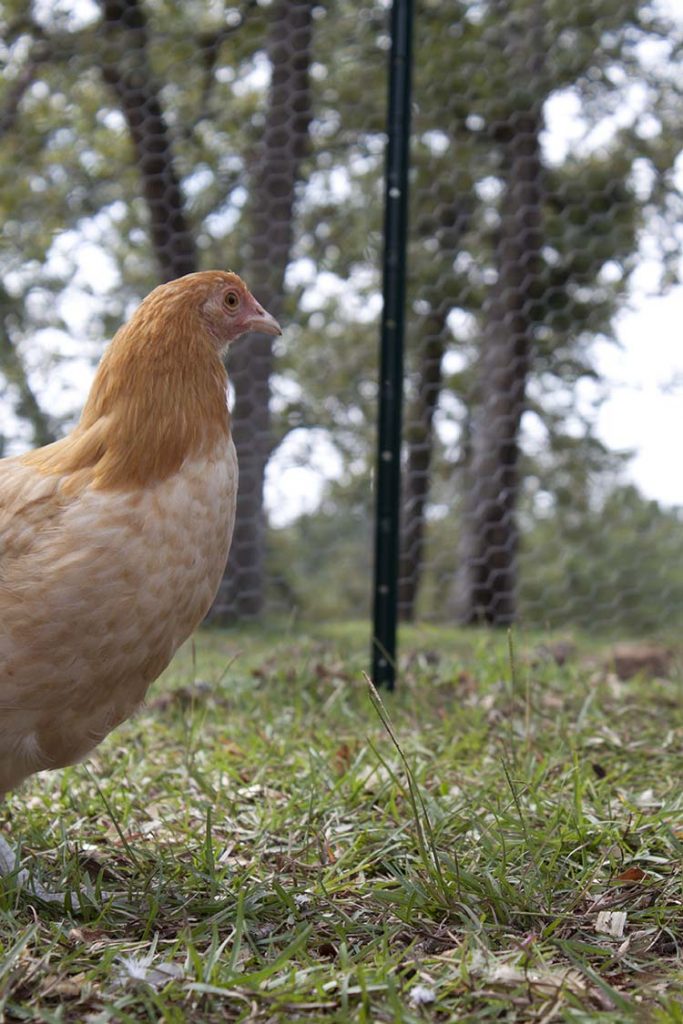
How to Introduce for Less Stress
The truth is, introducing new flock members is stressful, to everyone, no matter which way you slice it. So, you should try and do it as little as possible. Constantly introducing new flock members constantly disrupts the established pecking order and can lead to big problems, like cannibalism. Which is just as devastating as it sounds like it would be. Keep new introductions to a minimum and make sure your setup includes ways for newer, or timid, birds to get away from more aggressive, or dominant, flock members.
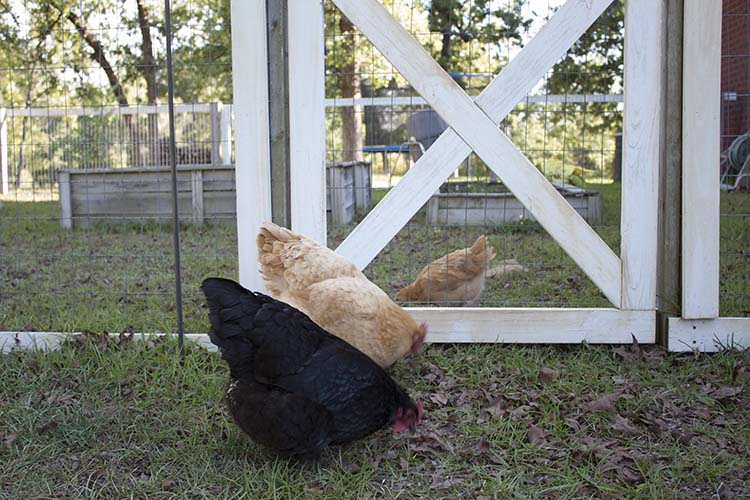
Because I’ve got a small flock of mature hens (four), and because I had to separate my baby chicks into two separate brooders, I’ll be making introductions twice. So what I’ve been doing is taking both sets of baby chickens out the garden to mingle with one another while allowing the mature hens to roam freely outside the garden fence. This way the baby chicks get reacquainted with one another and the mature hens get used to the idea that there are babies. It also helps the baby chicks with building their natural immunity by allowing gradual exposure to infectious organisms before being returned to the brooder, as opposed to overwhelming their systems.
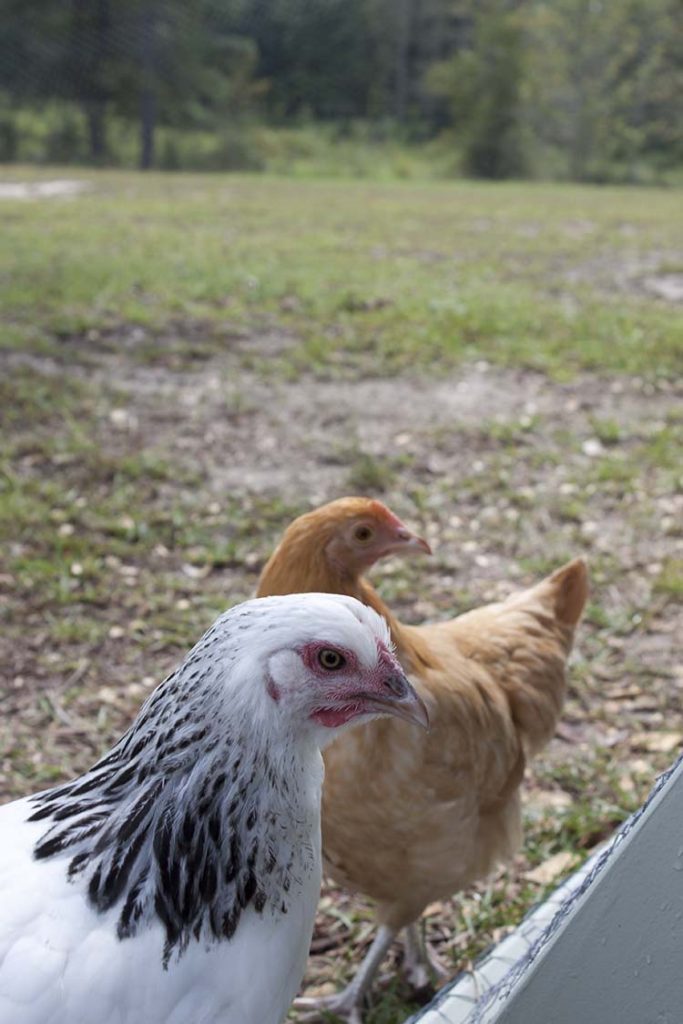
Pecking Order
Even though my new flock members (20) greatly outnumber my existing flock (4), a pecking order between those differently aged flocks will quickly be established with the older hens being on top and the younger hens falling somewhere along the hierarchy below them. The rooster, as he ages, will eventually be king of this palace. But until he’s older, he’ll likely fall behind the more mature hens. After that, the hens will continue to establish a pecking order amongst themselves as they grow and until everyone knows their place.
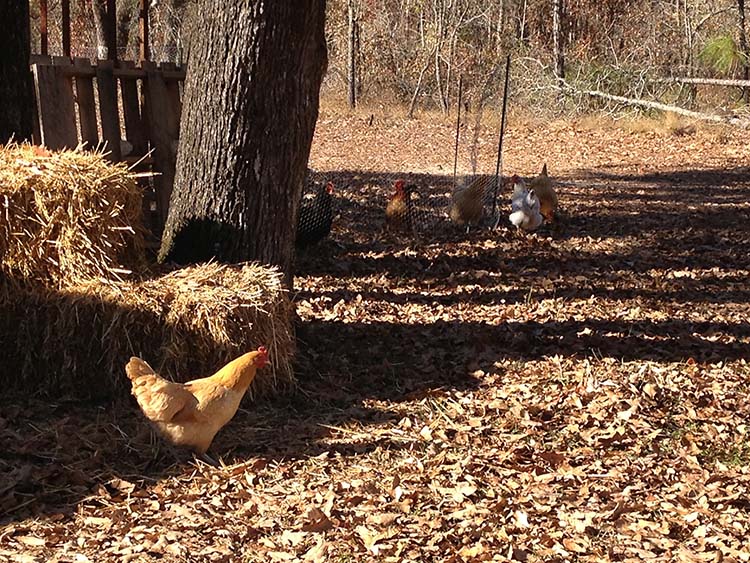
Chickens, like people, come in a variety of personalities. Some are more dominant and some are more passive. Since the more dominant birds will obviously rank at the top of the pecking order, it is essential to offer plenty of feeding and watering stations, relative to the size of your flock, so that everyone has an opportunity to equal access.
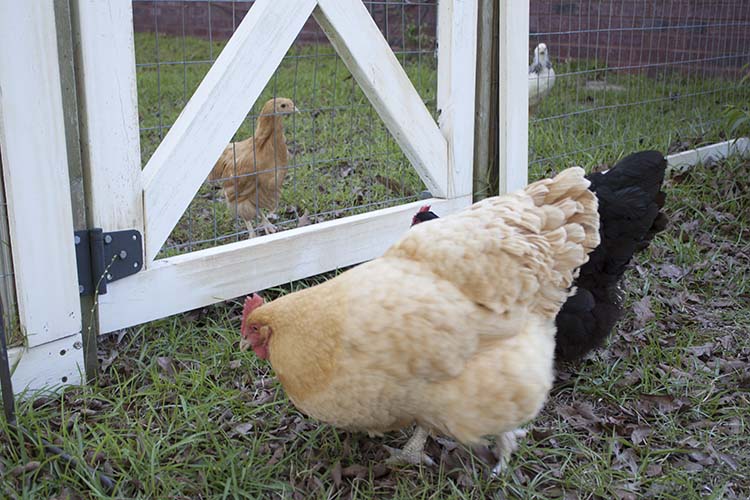
After my new flock members, and my existing flock members, have gotten used to the idea of one another, I will add the new chicks to the new coop. They will stay there, having access only to their run for a week or two. This will get them used to the idea that this is home and it will also give the mature hens more time to get acquainted with the run fence between them. After that, I will start opening their coop, only when I am outside with them, so that they can mingle together in the yard.
It will be awhile yet before they are big enough to completely free-range on their own. The smaller they are, the easier prey they are. And they need some time to learn the rules of the yard; where to go, what to eat, what not to eat, and when and where to come home to. They’ll also remain on medicated feed until they are 16-weeks. So prior to that, I won’t allow the mature hens access to the new coop.
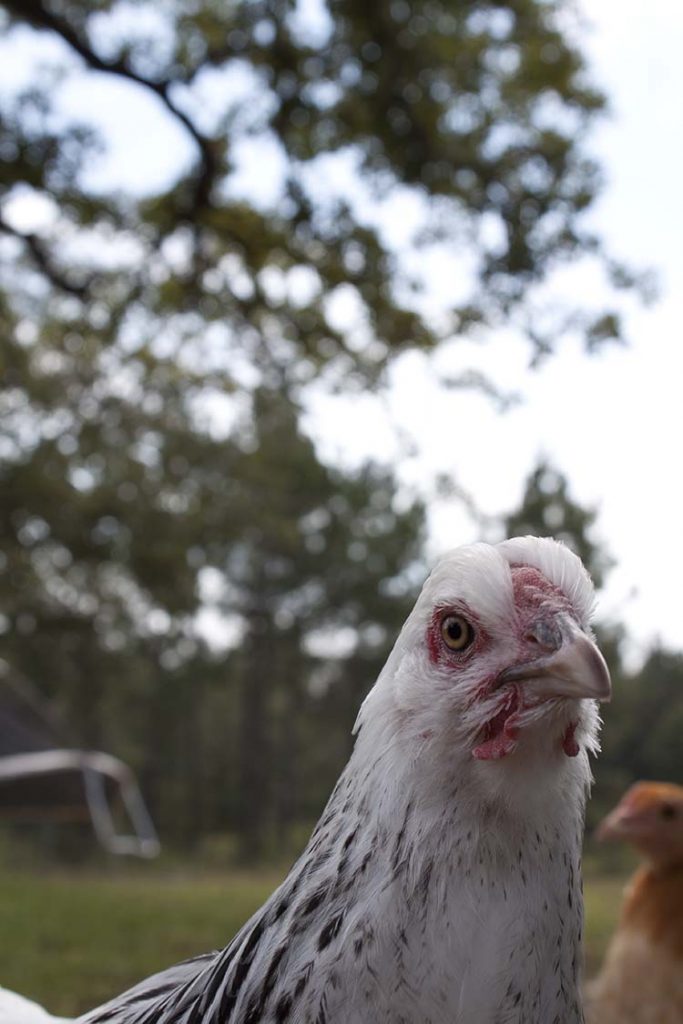
My hope is that the 16-week transition period, with the mature hens coming to live in the new coop, will be relatively seamless since they’ve had plenty of time to get used to one another and establish some sort of pecking order, in the yard at least, at this point. My plan is to bring the mature hens into the new coop in the evening, under the cover of darkness. Everyone is tired from their day and getting ready for bed. Also, the dim light makes the new tenants less obvious and is less like to ruffle any feathers. Pun intended.
If you follow all these suggestions and find that there are ongoing problems, look for management reasons such as insufficient space or ventilation and make sure everyone has equal opportunity to feed and water. If not, fixing these issues will likely solve your problems.
Ready for a coop?
Please join me for a series of posts all about our new coop build as well as basic chicken care all leading up to the reveal of the DIY fancy farmhouse chicken coop!
If you’re not down to DIY your coop, these are my fav pre-fab coops. All of TSC’s online coops are an extra 10% off now until April 30th with discount code COOPS10.
This is a sponsored post written in collaboration with Tractor Supply. Thank you for supporting the brands that make Southern Revivals possible.
Please join me for a series of posts all about our new coop build as well as basic chicken care all leading up to the reveal of the DIY fancy farmhouse chicken coop! Here’s what you’ve missed so far:















Leave a Reply